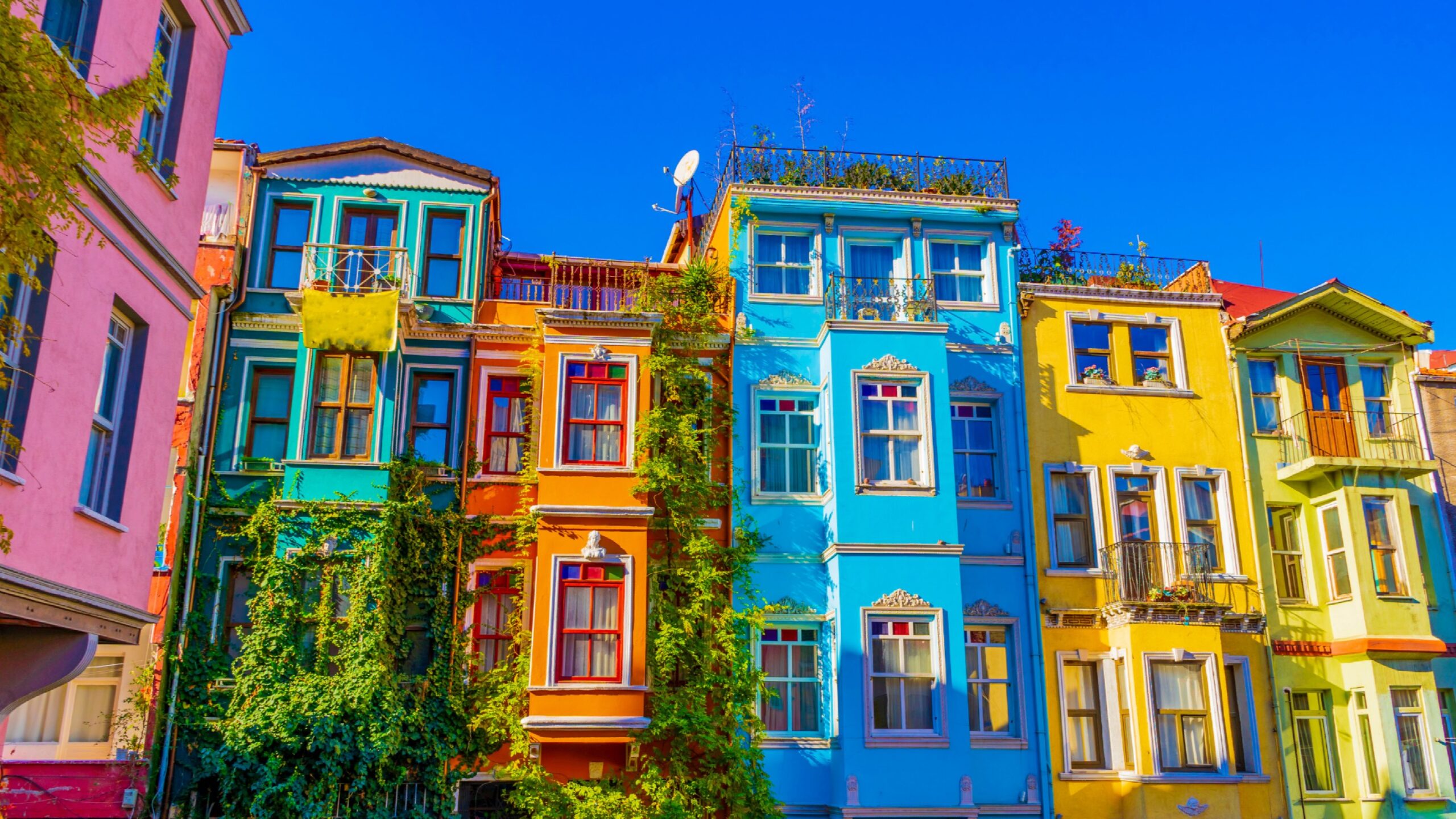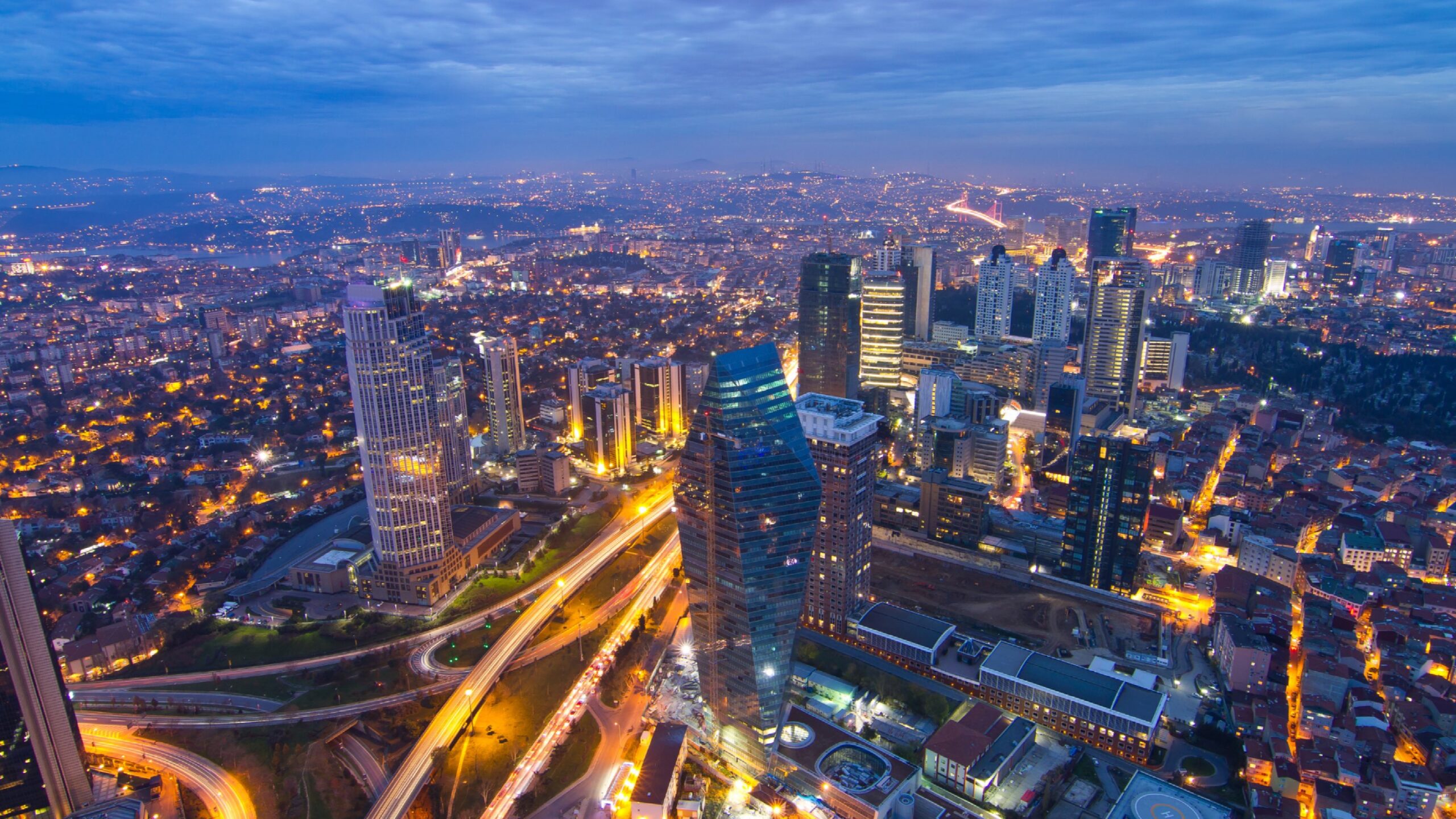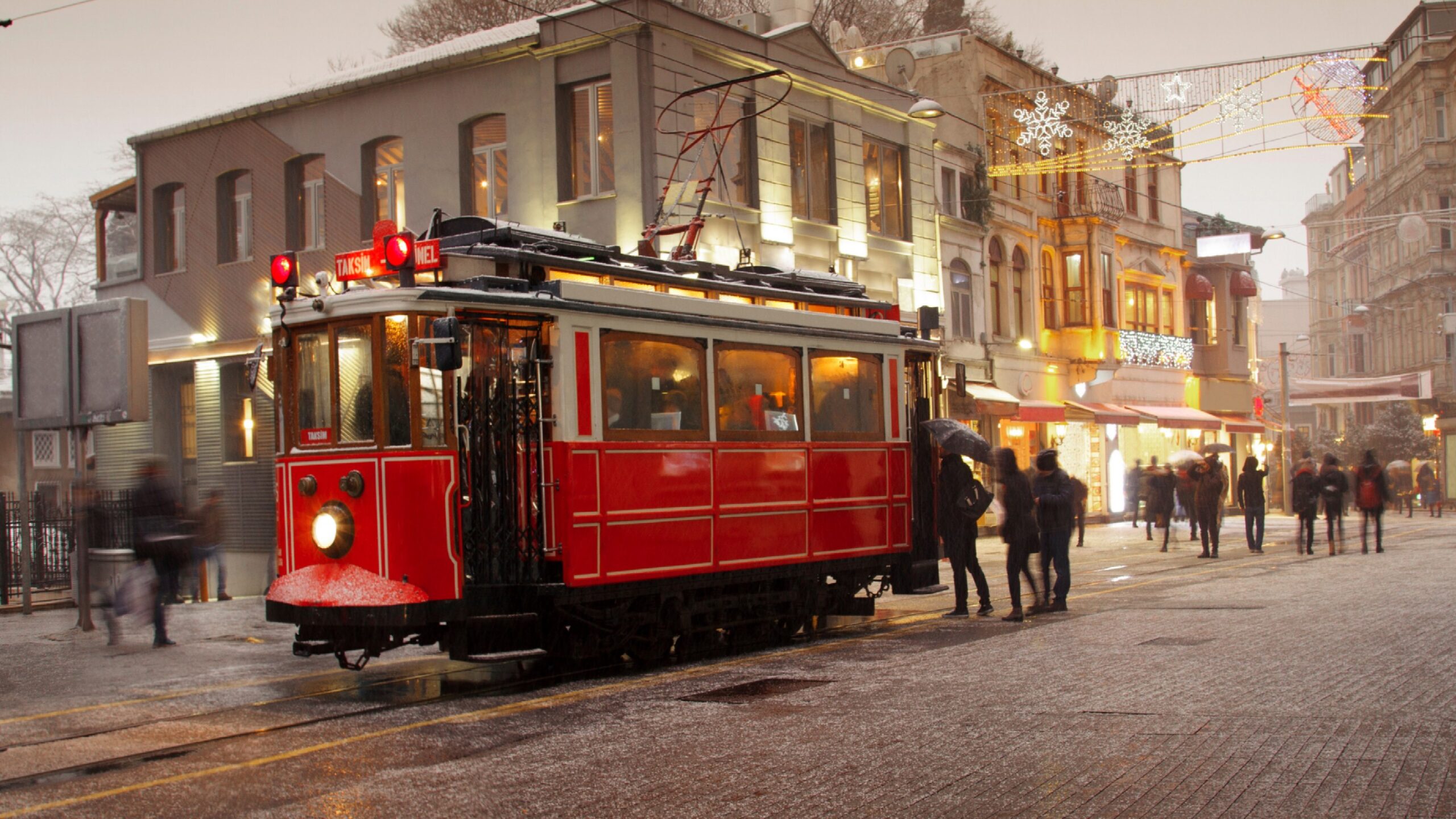Istanbul is located in western Turkey. It is the most populated city in the country and at the same time the cultural and economic center.
Geography
The Bosphorus Strait separates the city into a European and an Asian part. To the south lies the Sea of Marmara and to the north the Black Sea. This location makes Istanbul the only metropolis in the world that lies on two continents. The Golden Horn, a strait that runs to the west, divides the European part into a peninsula in the south with the historic city center “Sultanahmet” (Historic Peninsula) and into a northern city zone, the historical Genoese district “Galata” (Modern Istanbul). Furthermore, the metropolis extends to the west as well as to the north and east, and also includes the associated Princes’ Islands in the Sea of Marmara.
Simplified, Istanbul can be divided into three major areas:
• The Historical Peninsula – at the same time former Constantinople – in the southern part of the European side. Along the Sea of Marmara there are new residential and commercial businesses, which now even extend beyond the airport to far west.
• The Beyoğlu district, which was influenced by the west, in the northern part of the European side. It stretches in a line of former fishing villages such as Ortaköy and Bebek along the Bosphorus coast. Up until the beginning of the 20th century, wealthy Istanbulites built luxurious wooden villas called “Yalı’s”, which served as their summer residence. Here on the Bosphorus, the development to the west was also pushed forward. Due to the strong growth of Istanbul since the 1970s, the modern, suburban districts, which have been transformed into huge business and financial centers, make up the most of the European city area above the first and second Bosphorus bridges now.
• The Üsküdar and Kadıköy districts on the Asian side, formerly known as the “Land of the Blind” and originally independent cities, are today mainly residential and business districts, where approximately one third of the Istanbul population lives. With the construction of the three Bosphorus bridges in 1973, 1988 and 2016, there was a steady increase in settlements. Along the Bosphorus and the Sea of Marmara, new urban districts and neighborhoods – so-called “Gecekondus” – have been extensively developed into the Asian hinterland.
With a quite hilly area of 1,830.92 km², the urban settlement area currently has about 15.2 million inhabitants (2019), ranking fourth among the world’s most populous cities.
The province of Istanbul, on the other hand, has an area of 5,313 km². Three major airports, numerous long-distance bus stations, a central terminus station and a well-developed shipping network make Istanbul the largest traffic hub in the country. Its transit position between two continents and two seas is also an important station for international logistics.
Climate
Due to its geographical location between the Mediterranean and the Black Sea, Istanbul is exposed to different climatic influences and has a mild and highly humid maritime climate. Cold and dry air comes from the north (northeastern wind “Poyraz”), while warm and humid air (southwest wind “Lodos”) often comes from the Mediterranean region.
• The average annual temperature is around 14°C (57°F)
• The warmest months are July and August, averaging over 22°C (71°F)
• However, the coldest months are January and February, as the temperature is slightly above 5 ° C.
• In summer, temperatures of over 30 °C (86°F) in the shade can be reached during the constant heat periods from June to August.
• Winter is cool or cold and weather is changeable. For example, there are spring-like sunny days, but also heavy rain showers, cold spells and snowfall are to be expected, as the thermometer rarely drops below 0°C (32°F).
• The average annual precipitation is 850 mm (33in). Most precipitation occurs in the months of November and December with an average of 110 and 124 mm (4,3 and 4,8in). The lowest precipitation is recorded for the months of May, June and July with 36, 37 and 39 mm (1,4-1,5in) on average.
Architecture
The architecture of the city goes back a long way. Due to its 2600-year existence, it is characterized by ancient, medieval, modern and – more recently – contemporary architectural styles. It combines elements of the Greeks, Romans, Genoese, Byzantines and Ottomans to form a cityscape whose historic Old Town has been declared a World Heritage Site by UNESCO for its uniqueness.
We offer expert architectural tours through Istanbul’s history, present and future. We are also happy to put together the right itinerary for you based on different topics. There is a lot to explore in Istanbul, even behind the curtain. Make your request via our contact form. We look forward to you!
Religion and ethnic groups
For a long time, Istanbul was an important center of Orthodox Christianity and Sunni Islam. At the same time it is the seat of the ecumenical patriarch and has numerous mosques, churches and synagogues. At 80%, a large proportion of the population professes Islam. In addition, significant religious minorities include the Greek Orthodox Christians, the Syrian Orthodox Aramaeans, the Armenian Christians and the Sephardic Jews who have been living in Istanbul for more than 500 years.
Istanbul’s population is composed of different ethnic groups and offers a colorful cultural mosaic. In addition to the majority of Turks, the Kurds form the largest community with about two million inhabitants. Far behind them, there are an estimated 100,000 Russians, who sought refuge in Istanbul during the October Communist Revolution. The number of Chinese is also about 100,000. Among the largest Christian populations traditionally living there are the Armenians, whose official figure is 45,000, followed by about 17,000 Aramaeans. The 21,000 Jews make up the second largest religious minority. Some of the approximately 10,000 Bosphorus Germans come from families who found refuge in Istanbul during the First World War, mostly in the first half of the 19th century, and have been living there permanently ever since. In part, the 2,000 Greeks belong to the original inhabitants who have lived here for many generations. A small Polish community with about 400 inhabitants lives in Polonezköy, which is made up of descendants of the Polish, Czech and Bohemian mercenaries of the Sultan, who settled there after the Crimean War. Other ethnic groups include the Lases, Arabs, Syrians, Circassians and Roma, whose proportion is very small in relation to the total population.
Population
The population growth in the metropolis increased rapidly. In 1950, about one million people lived in Istanbul. But soon, due to the civil war in southeastern Turkey, the rural exodus to the city began quickly, so that in 1975 it was already more than twice the number of inhabitants. It can be said that Istanbul has seen a tenfold increase in population over the last fifty years.
The majority of the currently officially registered 15,232,099 inhabitants live on the European side. Unofficially, however, the population is estimated at around 18 million.












